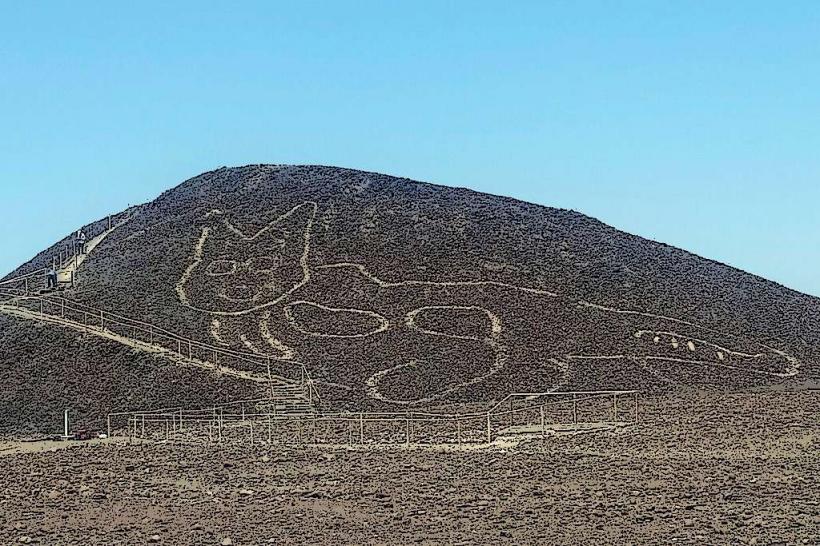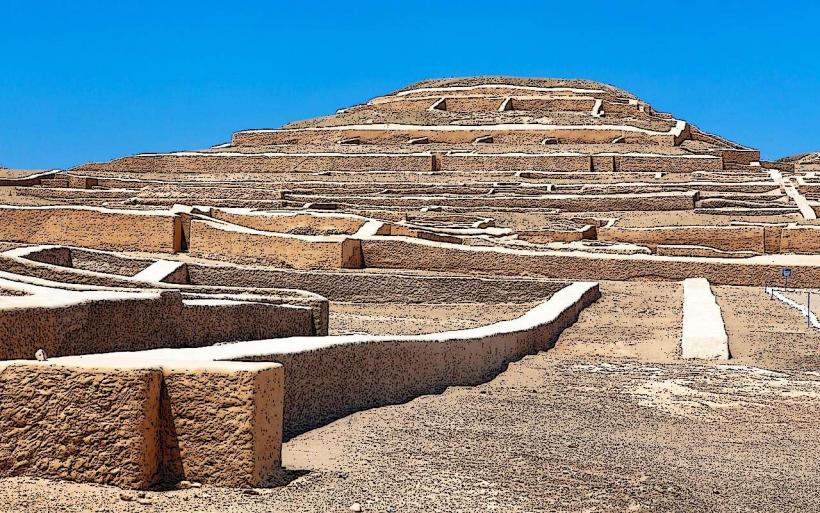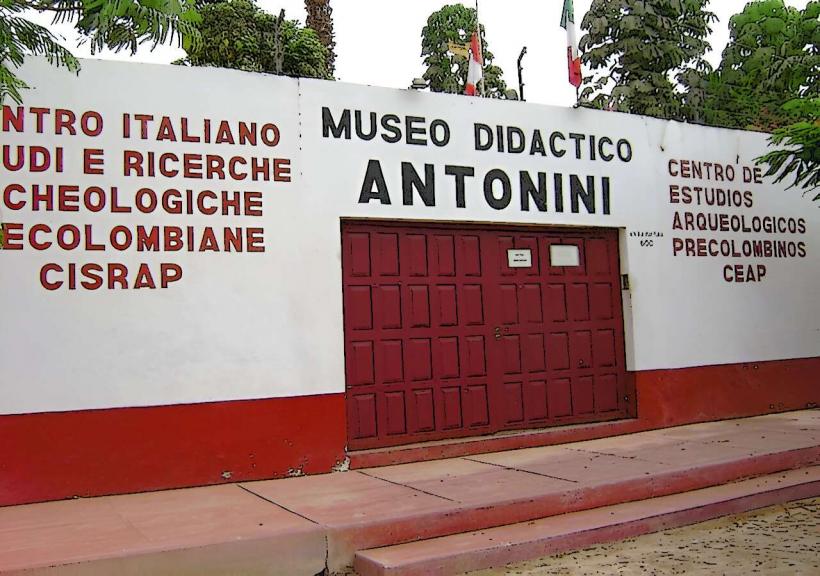Information
Landmark: Chauchilla CemeteryCity: Nazca
Country: Peru
Continent: South America
Chauchilla Cemetery, Nazca, Peru, South America
Overview
In the windswept Nazca Desert of southern Peru, the Chauchilla Cemetery holds ancient graves beneath the sun-bleached sand, in turn this extraordinary archaeological site holds pre-Hispanic tombs and mummies, many from the Nazca culture, famed for the vast Nazca Lines etched into the desert, their intricate woven textiles, and elaborate ceremonial rites.Chauchilla offers a vivid glimpse into how the Nazca honored their dead, revealing their spiritual beliefs, the order of their society, and the deep bond they felt with the afterlife-sometimes seen in a single, sun-bleached shroud still wrapped around ancient bones, meanwhile chauchilla Cemetery lies about 30 kilometers southeast of Nazca, Peru, in the dry desert where the wind carries fine dust over ancient graves.In use mainly between 200 and 600 CE, during the peak of the Nazca civilization, this pre-Columbian burial ground holds tombs, mummies, and funerary objects left scattered across its surface, in conjunction with it offers a rare glimpse into how the Nazca honored their dead-through careful mummification, elaborate burial rites, and a deep belief in life beyond death.The Nazca themselves thrived along Peru’s southern coast, especially in the Nazca Valley, from roughly 200 BCE to 600 CE, in conjunction with the Nazca are best known for the vast geoglyphs they carved into the desert floor-like a giant hummingbird stretching across the sand-along with their skill in pottery, textiles, and farming.At the Chauchilla Cemetery, researchers can closely examine the burial rites that reveal how this culture honored its dead, subsequently in the tombs of Chauchilla Cemetery lie rows of well-preserved mummies, their linen wrappings stiff with age, offering a haunting glimpse into the Nazca people’s beliefs about life, death, and what comes after.Many of these mummies were laid to rest sitting upright in ceremonial poses, arms folded tight across the chest or legs drawn neatly together, what’s more people think this posture held symbolic meaning tied to spiritual beliefs, perhaps to help the dead rise to their feet in the afterlife, as if ready to take a first step on a stone floor.The cemetery holds countless tombs, some carved deep into the rock, others little more than shadowed pits in the earth, therefore many of these tombs were carved into the desert floor, then hidden beneath layers of stone, though wind and years have stripped some bare.They laid the bodies in tombs, surrounding them with pottery, folded textiles, worn tools, and even bowls of grain-gifts meant to sustain the dead in the world beyond, as well as the Nazca mummies uncovered at Chauchilla show just how skilled their embalmers were, with skin still stretched smooth over bone after centuries.The process involved removing internal organs, treating the body with herbs and oils, and wrapping the remains in textiles, moreover sometimes, they tucked the mummies into ceramic urns, their brittle wrappings brushing against the cool clay.The mummies are astonishingly well-preserved-some still have brittle hair clinging to their skulls, skin stretched thin over bone, even after hundreds of years, to boot funerary Offerings: Beside the mummies, archaeologists uncovered an array of grave goods-ceramic pots with flaking paint, woven textiles, and well-worn tools.These items were meant to help the dead navigate the afterlife, while also showing their rank and role-like a gold ring that marked a leader in the community, on top of that some mummies went to their tombs with tiny carved figurines, a glint of gold jewelry, or other objects meant to hold meaning.At Chauchilla, the way the dead were buried-bodies wrapped in woven cloth and placed carefully in tombs-reveals a belief in an afterlife where the adventurer’s spirit carried on, not only that one striking feature of the Nazca funerary system was the way bodies were arranged-often upright or seated, knees drawn close-expressing their belief that life carried on in another realm.The Nazca people practiced artificial mummification, using a mix of natural conditions and careful rituals to keep the bodies intact, sometimes wrapping them tightly in woven cloth, equally important the remarkably intact mummies discovered at Chauchilla hint at a faith in life beyond death, their skin and hair kept as if time itself had paused.Offerings for the Afterlife: Objects tucked beside the mummies-like woven blankets and clay pots-show the Nazca believed the dead would still need such things beyond this world, likewise they laid tools, food, and even compact ceremonial carvings beside the body, hoping to provide comfort and care in the life to come.Mind you, Community and Social Status: Elaborate offerings and finely crafted artifacts-like a polished bronze mirror-hint that the deceased’s rank shaped both the kind and the quantity of what was placed in the grave, after that those of high rank were probably laid to rest with finer treasures-gold ornaments, carved shells-signs of their standing in Nazca society.By the time the Spanish arrived in the 1500s, the Chauchilla Cemetery-its dry earth scattered with brittle bones-had long been left to the wind and sand, also historians believe the Nazca civilization started fading around 600 CE, likely from a mix of harsh climate shifts, drained resources, and growing unrest within its communities.Somehow, By then, people had stopped mummifying their dead, and the Chauchilla Cemetery lay silent under the dry desert sun, along with when the Nazca culture collapsed, the site slipped from memory, lying silent under sun and wind until explorers found it again in the 20th century.Over the centuries, looters pried open countless tombs, stripping mummies of their gold bracelets and carrying everything away, simultaneously even with the looting, the site has yielded rich clues about the Nazca people's burial rituals, from carefully wrapped bodies to offerings tucked beside them.The Chauchilla Cemetery sits in the dry sweep of the Nazca Desert, about 30 kilometers southeast of Nazca, where the wind stirs dust over ancient graves, alternatively you can drive to the site, or join a guided tour that sets out from Nazca, where the desert heat shimmers off the road.The cemetery welcomes visitors every day, usually from 9:00 in the morning until 5:00 in the afternoon, when the gates close with a soft metallic clang, at the same time consider visiting with a local guide-they can point out carved symbols you might miss and share the stories behind the tombs and mummies.It appears, At Chauchilla, most visitors hop on a guided tour, complete with a dusty van ride to the site and a vivid, storyteller’s account of its history and culture, consequently the site’s fairly easy to reach, but it sits deep in a remote desert, where the sun beats down hard-bring lots of water and be ready for the heat, more or less Though wind and rain wear at the site, teams work steadily to shield the mummies and tombs from further decay, brushing sand from stone before sealing cracks, equally important visitors are asked to treat the site with care, leaving the weathered stones and fragile artifacts exactly as they find them, occasionally When the site was uncovered in the 20th century, researchers discovered that tomb robbers had long since stripped it of many mummies and treasures, leaving only a few dusty relics behind, alternatively still, large remains and a thick, sticky grave sludge linger.
Author: Tourist Landmarks
Date: 2025-09-13




